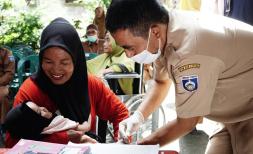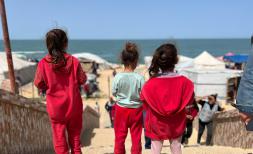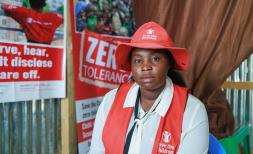16 facts that will inspire you to invest in girls

Sarah, 11, displaced after cyclone Ana and floods, Malawi. Photo: Thoko Chikondi / Save the Children.
Ending gender-based violence (GBV) against girls hinges on making the right investments.
Gender-based violence encompasses different forms of violence – including physical, sexual and psychological abuse – used against a person because of their gender.
Between the 25th of November - 10th of December, advocates are coming together to shed light on gender inequality, abuses of power and harmful norms that result in GBV. This initiative, called the 16 Days of Activism Against GBV, will highlight that the call to invest in girls is more urgent than ever.
{cta | We stand side by side with children in the world’s toughest places. | https://donate.savethechildren.org/en/donate/ | Support our work
But what does ‘investing in girls’ look like in practice? Whether you’re a policymaker, funder, or part of a civil society organisation, here are 16 impactful steps to advance girl’s rights and drive action against gender-based violence.
1. Gender-based violence is the least funded priority for protection in humanitarian interventions, leaving girls at risk.
Girls face GBV in every crisis and that risk is rated “severe” or “extreme” in most ongoing humanitarian operations. Girls who live in humanitarian contexts or who have been forced to leave their homes face increased risks of child marriage, harassment, trafficking and sexual violence.
Solution: Listen to women and girls in humanitarian crises and increase funding to meet their needs, including through investing in child protection services.
2. One girl marries every 2 seconds, yet aid to address child marriage remains shamefully low.
In 2020, just 0.07% of aid went toward ending child marriage. Governments cannot hope to meet the deadline they set themselves – to end child marriage by 2030 – without increasing investment and collaboration with the countries where girls are impacted the most.
Solution: Child marriage is a cause and consequence of gender inequality. Investing in ending this rights abuse will also help reduce poverty and improve child health and education.
3. For every $600 invested, one case of child marriage can be prevented.
Ending child marriage is not easy. Still, progress has been made and we know more about what works than we ever have before. We know that initiatives need to tackle root causes like patriarchal norms and gender inequality. Engaging men, boys, parents and traditional leaders can help to change community attitudes. Programmes also need to address risk factors like poverty and be shaped by girls themselves as they are best placed to explain what they need.
Solution: Invest in ‘what works’ by expanding evidence-based initiatives to end child marriage so that they reach more girls, in more places.
READ MORE: Ending Child Marriage in Sierra Leone
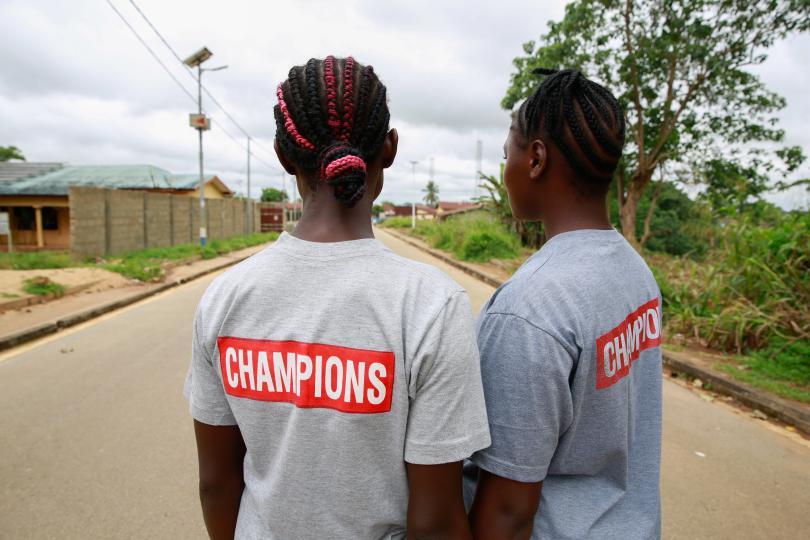
Cousins Kuji, 19 and Kpemeh, 18 wear their Ending Child Marriage Champion T-shirts in Kailahun, Sierra Leone. Photo: Shona Hamilton / Save the Children
4. By 2030, ending child marriage could generate more than $500 billion in global benefits each year.
Child marriage ends girls' childhoods. Ending this human rights abuse upholds the rights of girls around the world. Girls who are not married have better access to sexual and reproductive healthcare, education and nutrition. They can contribute more to their communities, and communities need to spend less money to combat the negative effects of child marriage.
Solution: Create healthier, happier, stronger communities by funding programmes and policies that focus on ending child marriage and other abuses of girl’s rights.
5. Across all regions, progress toward ending child marriage has primarily benefited girls from the richest families.
With little funding being made available to fight child marriage, making sure it reaches the most vulnerable girls is crucial. To improve interventions, information on the diversity of girls’ experiences must be collected regularly. Programmes and policies must serve girls growing up in low-income households, those in hotspots for child marriage and climate change, girls with disabilities, those who are displaced, LGBTQ+ individuals, girls from indigenous communities, and those who are married, widowed or divorced.
Solution: Fund research to understand the experiences of girls most impacted by inequality and discrimination as a way to support girls in all their diversity and address long-standing injustices.
6. Only 40 countries have or are developing national action plans to end child marriage.
These plans can serve as a roadmap for ending child marriage and realising the rights of girls who have been married, divorced or widowed. Yet lack of funding for implementation has limited their impact in too many countries. Fortunately, in 2021, all 54 African countries committed to the joint development of a costing framework. This will provide a financial compass to guide budget allocations, work with donors and civil society, and improve transparency and accountability to girls and their communities. Save the Children is now supporting the consultation and testing of a draft costing framework.
Solution: Develop, cost and fully fund national action plans to end child marriage and other forms of gender-based violence against children.
READ MORE: One third more girls set to face double blow of climate change and child marriage by 2050 – study
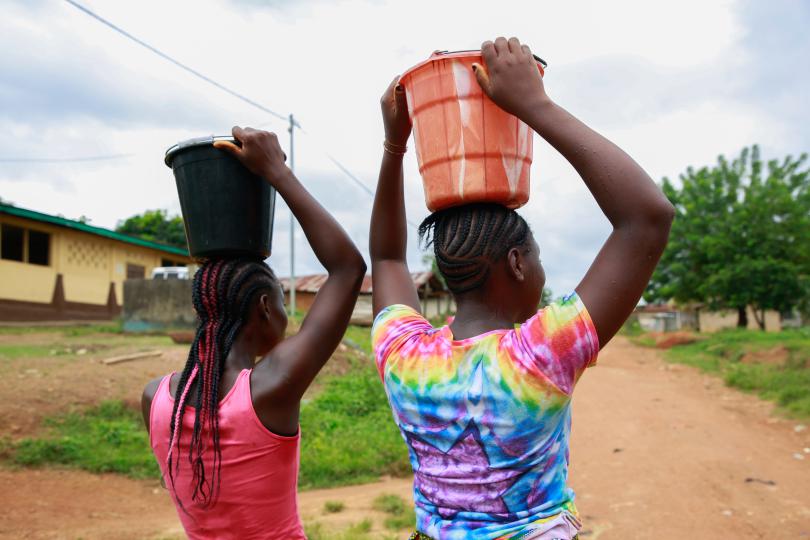
Cousins Kpemeh, 18 and Kuji, 19 carry water back to their homes in Kailahun, Sierra Leone. Photo: Shona Hamilton / Save the Children
7. Less than 2% of national climate plans mention girls, despite evidence that climate disasters increase child marriage.
Girls experience the climate crisis in unique ways. They may face risks of child marriage because climate impacts have affected their families’ income – creating an incentive for parents to marry their daughters to reduce the number of children they need to feed. Climate disasters can also force girls out of school and girls whose education is interrupted are at greater risk of dropping out permanently than boys.
Solution: Scale up child-responsive climate financing that helps girls and most at-risk children adapt to the changing climate, strengthens key services for children’s wellbeing, and compensates for losses and damage caused by disasters.
8. Girls who have contributed the least to climate change bear the brunt of its impacts – including a greater risk of child marriage.
Despite the world’s least developed countries contributing a mere 9% of global CO2 emissions, 69% of climate-related deaths occur in these countries. In short, those with the smallest carbon footprints are facing the largest consequences. The Sustainable Development Goals (SDGs) and COP processes provide a roadmap to address the climate and inequality crises. However, without financing, they remain empty promises.
Solution: Improve the global financing system to unlock resources for the SDGs and climate action by strengthening global tax/debt systems and policies – ensuring that wealthy countries pay their fair share to allow lower-income countries access to affordable lending and safeguards against climate shocks.
READ MORE: A generation fighting for action on the climate crisis
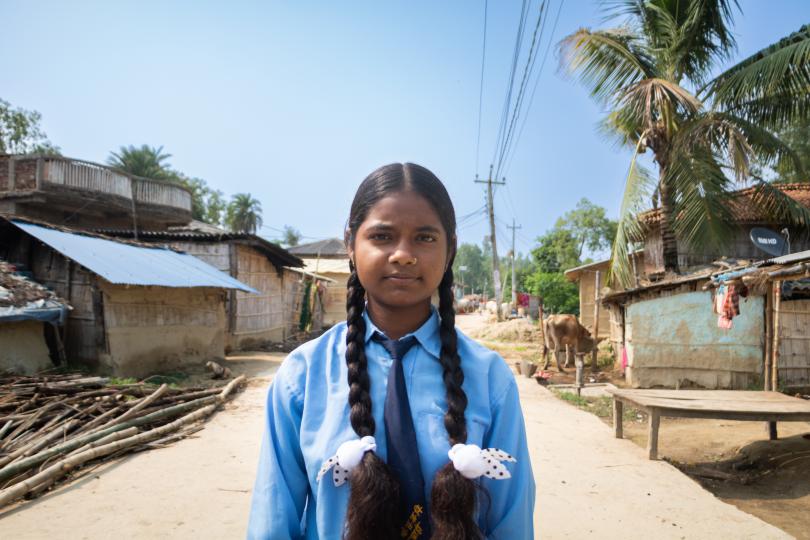
Kamani, 14, lives with her family in a small village in Nepal's Mahottari District, which is often hit by flash floods. Photo: Binod Thapa Magar / Save the Children.
9. Only 1 in 4 children benefit from social protection, leaving girls and their families without essential resources.
Currently, 1.77 billion children and their families don’t have financial support for necessities such as food, clothing, housing and healthcare (known as social protection or family benefits). These safety nets are even more critical for girls during crises when loss of income can lead families to consider child marriage.
Solution: Governments should provide families with financial support to soften economic shocks and reduce increased risks of gender-based violence.
10. If current trends continue, by 2025, climate change will contribute to at least 12.5 million girls each year not finishing their education.
Climate change increases the insecurity girls face as it disrupts the services girls need to live healthy and fulfilling lives. Many of the schools, hospitals, roads, public transport, and water, sanitation and hygiene (WASH) facilities girls rely on are not equipped with the resources needed to withstand the changing climate.
Solution: Child-centred adaptation must be enhanced with a focus on services girls heavily depend upon, such as sexual and reproductive health, education, WASH and gender-based violence response services.
11. Girls have a right to seek and receive information in ways that work for them, but decision-makers rarely provide child-friendly resources.
Decisions about girls’ lives are made every day, nearly always without their input. Co-creating and designing child-friendly resources with girls ensures that they are getting the information they need in a way that works for them.
Solution: Invest in reaching girls with child-friendly resources and accessible, inclusive education.
12. Between 54 -91% of young feminists rank a lack of financial resources as their top challenge.
Adolescent girls and their networks are vital to feminist movements and critical for sustaining progress for gender equality. Still, girl-led movements struggle to be recognised as influential actors and often don’t get enough funding to make their work possible.
Solution: Work with and increase funding for girl-led movements to make sure they have time and safe spaces to meet and strengthen their movements. Innovative approaches can include lighter-touch funding requirements, new ways to transfer funds and supporting girls with non-financial resources (see our brief 5 Ways to Support Girl-Led Movements for more ideas).
READ MORE: Five Ways to Support Girl-Led Movements
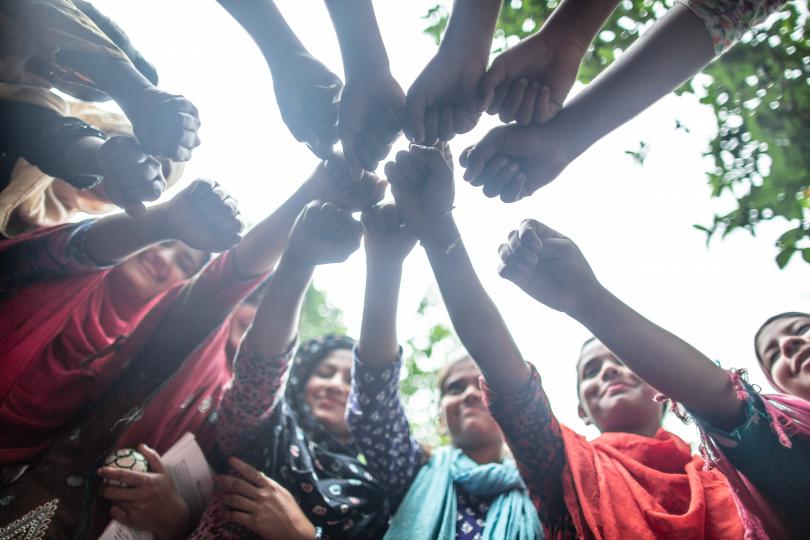
A group of girls in a circle at a peer-led village workshop designed to inform and empower girls, Sylhet, Bangladesh. Photo: Tom Merilion / Save The Children
13. Despite funding challenges, 95% of girl and young women activists say their activism has a positive impact on them.
Girls find meaning in advocating for their rights as they feel more empowered, capable and proud. These positive impacts have a ripple effect on other children and promote positive change in their communities.
Solution: Girls’ empowerment is a transformational investment, particularly for reducing gender-based violence. Find out more about how to ensure the programmes you invest in empower girls from Save the Children’s Girls’ Empowerment Model.
14. Less than one per cent (0.94%) of gender-related aid is given to women’s rights organisations and institutions, while girl-led movements receive even less.
Research from more than 70 countries over four decades shows that independent feminist movements are the key factor in increasing protection from violence against women and children. Supporting women-led feminist organisations to mentor girl-led groups encourages intergenerational learning and capacity-building.
Solution: Allocate funds to initiatives that open up civic spaces and ensure that girl-led groups can engage freely, safely and meaningfully.
15. About 25% of girl-led movements say they operate on less than $10,000 a year.
Girl-led movements are running on tight budgets and limited resources. This means their goals and ambitions are restricted and much of their work is done on a voluntary basis – increasing girls’ unpaid workload and leading to girls not getting the compensation they deserve for their time and expertise.
Solution: Compensate girls in ways that are tailored to their context and integrate both financial and non-financial offers.
READ MORE: Ending Child Marriage

Taslima, 10, puts her hand up in class at her community school - Sylhet, Bangladesh. Photo: Tom Merilion / Save The Children
16. Over 88% of girl-led organisations say they were launched due to a community (>50%) or personal incident (38%) that moved girls to act against injustice.
Girl-led movements are rooted in their communities and driven by a passion to create change. Every girl has the lived experience and expertise to inspire action. Girls know the value of the lived experience and expertise every girl has to offer. Save the Children worked with a girls’ reference group on our Girl-led Movement Building project, which identified increasing access for girls with disabilities as something donors could play a key role in supporting them with.
Solution: Promote girls’ inclusion by ensuring accessibility – this includes creating accessible spaces (e.g. for girls with disabilities) and providing practical resources (such as care support for girls who are mothers or caretakers and providing accessibility budgets to cover internet, phone, childcare and travel costs).
Find out more + get involved
For more information, read our latest Global Girlhood Report: Girls at the Centre of the Storm – Her planet, her future, her solutions to find recommendations on how to stand up for girls facing the dual threat of child marriage and climate disasters.
We look forward to hearing how you are taking action during the #16Days, let us know on social media using #InvestInGirls.
